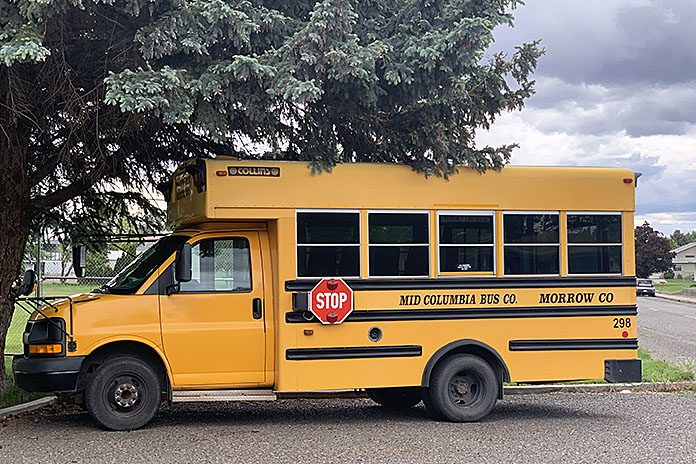
The COVID-19 pandemic and subsequent school closures across Oregon have required school districts to come up with solutions to various problems, including how to help students connect to state-mandated “distance learning for all.”
In the Morrow County School District, one of the challenges was how to provide learning to students without reliable Internet connection. According to Marie Shimer, director of Educational Services, the district conducted a family survey in each of its communities – Boardman, Heppner and Irrigon – to determine how many students did not have reliable Internet connection. The results showed that 40 percent of their students lacked reliable Internet connection.
That’s when Morrow County School District and the InterMountain ESD Information Technology (IT) Department put their heads together. The IT Department obtained WiFi hotspots and installed them on school buses or in some cases, on houses, where the largest needs were.
“We put the larger hotspots in locations with larger concentrations of students,” Shimer said. “The neighborhoods and Mid-Columbia Bus Company have been very collaborative with us in this process.”
According to IMESD Server Specialist Patrick Kerrigan, the hotspots grab a cell signal and turn it into a WiFi signal that provides Internet connection to the Chromebooks that the district issued to students when remote learning began in March.
Kerrigan said the devices broadcast a signal of about a 100-year circle and “they don’t push a signal into buildings very well, so sitting outside on a doorstep is usually best.”
The WiFi hotspots are not accessible to the public; they only connect to the district’s Chromebooks, which helps with security, Kerrigan said. How many hours a day do the hotspots run? Kerrigan said the ones installed on houses run constantly, but the ones on buses run for about eight hours off a battery pack.
Shimer said over the last week, about 16 GB of data has been used across the larger hotspots. The district also has 60 smaller hotspots on individual homes that provide a smaller area of connectivity.
“We have definitely increased Internet connections for many students who can continue their learning, be in touch with their teachers and simply know that the district is still here for them,” Shimer said.









